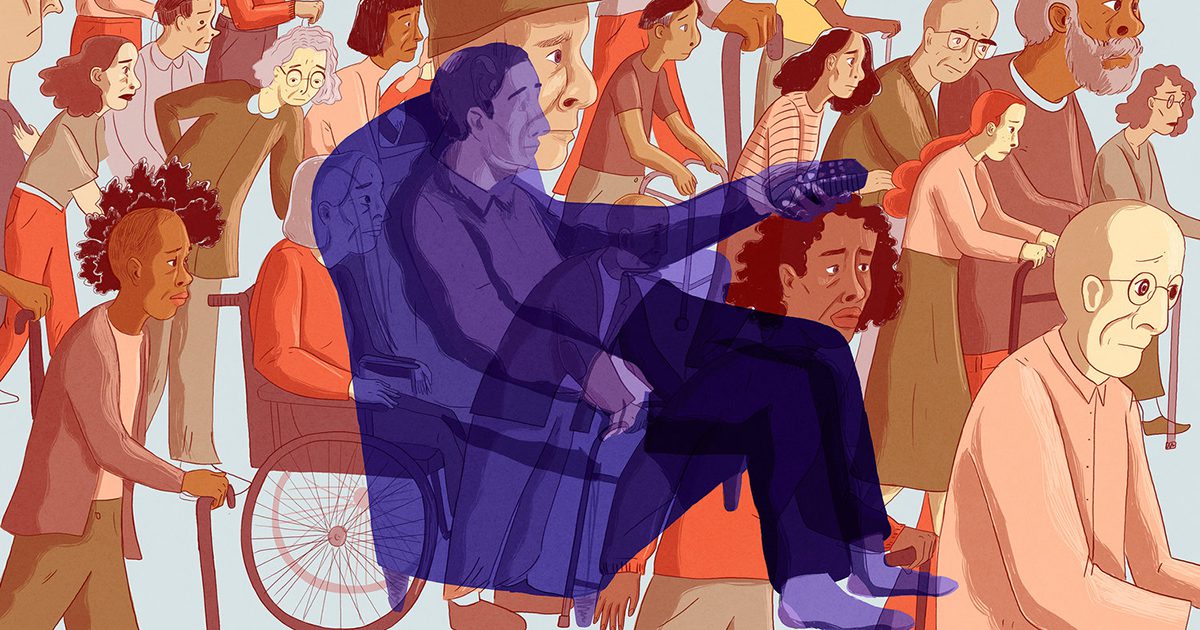Think about your daily routine. How many hours do you spend sitting? Be honest with yourself.
If you commute an hour in the morning an hour after work — that’s two hours, and if you sit at an eight-hour-a-day desk job that’s 10. Then you come home after work, eat dinner, and crash in your recliner for another three to four hours. That’s 13 to 14 hours of sitting. In one day.
Epidemiologist Loretta DiPietro of the Milken Institute School of Public Health at George Washington University and her team have uncovered good evidence that, as the years wear on, it actually reduces the ability of older people to get around on foot at all.
For the study which focused on sitting and walking ability and appears in the current issue of The Journals of Gerontology: Medical Sciences, researchers surveyed people ages 50 to 71 over the course of 8 to 10 years. They found that those who tended to sit the most and move the least had three times the risk of difficulty walking by the end of the study when compared to their more active counterparts.
Some ended up unable to walk at all.

Research suggests physical recovery from binge TV-watching gets harder as we get older.
Lily Padula for NPR
Prolonged sitting and TV watching were particularly harmful, DiPietro found, especially when combined with low levels of total physical activity. Young bodies may rebound from prolonged sitting with an hour at the gym, she says. But that seems less true in late middle age.
“Sitting and watching TV for long periods, especially in the evening,” she says, “has got to be one of the most dangerous things that older people can do.” DiPietro also notes that the period studied – the mid-1990’s to 2005, or so – was before the advent of streaming shows, so the problem is likely much worse now.
“Before binge-watching, at least when a show ended you got up and walked around,” DiPietro says. “It’s now possible to watch several hours without moving.”
Office workers used to allow themselves breaks in a workday to walk the hall to go to the restroom or take a lunch break. But, now we’re engineering much of that light activity out of our lives.
“We now use the Internet to go shopping, order groceries, send messages, and even gossip,” DiPietro says. “We used to walk down the hall and gossip; now we send it via email or text.”
To measure the effect of prolonged sitting on mobility, DiPietro and colleagues analyzed data from the NIH-AARP Diet and Health Study of men and women ages 50 to 71. The participants were all healthy when the study started in 1995 and 1996.
The researchers analyzed how much participants in the study watched TV, exercised, did gardening, housework or other physical activity at the beginning of the investigation.
They included “light” physical activity such as “puttering around, walking to get the mail, or walking to the car” says DiPietro.
THE RESULTS
Those who watched five or more hours of TV per day had a 65% greater risk of reporting a mobility disability at the study’s end, compared with those who watched less than two hours per day.
DiPietro offers an antidote: Get up at least every 30 minutes when staring at a screen.
“And if you insist on staying seated during that 15-second interval between episodes,” DiPietro says, “at least stand-up, march in place, jump around, kick legs — do anything to move about for at least one to two minutes.”
The result of that would be “phenomenal,” to mobility, she says, and be at least a start toward heart health, too.
Dr. Andrew Freeman, who directs cardiovascular prevention and wellness at National Jewish Health in Denver, and represents the American College of Cardiology, says people should do even higher intensity exercise regularly — at least to the point of being “breathless.”
In an older population, Freeman says if you’re going to be sedentary, you should try to be “as active” as you can when not sedentary. That may sound like common sense, he says, but the findings of the DiPietro study underscore the importance. Just five minutes a day of brisk movement, he says, is beneficial.
And, if you’re going to be a “couch potato” but still want to get some physical activity in, give this quick 8-minute couch potato workout a try:
If you found this article helpful, please share with friends and family by clicking the button below!




